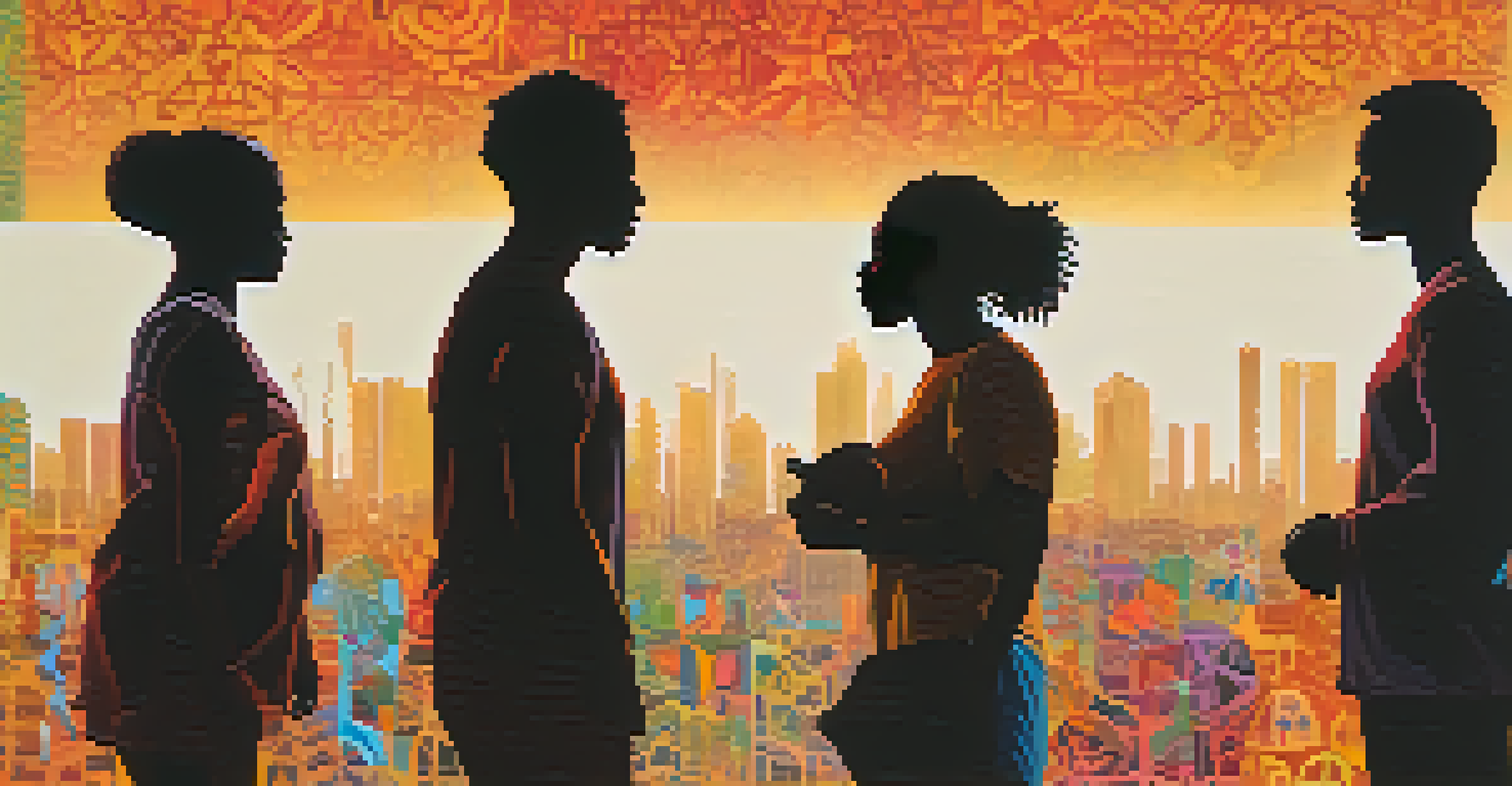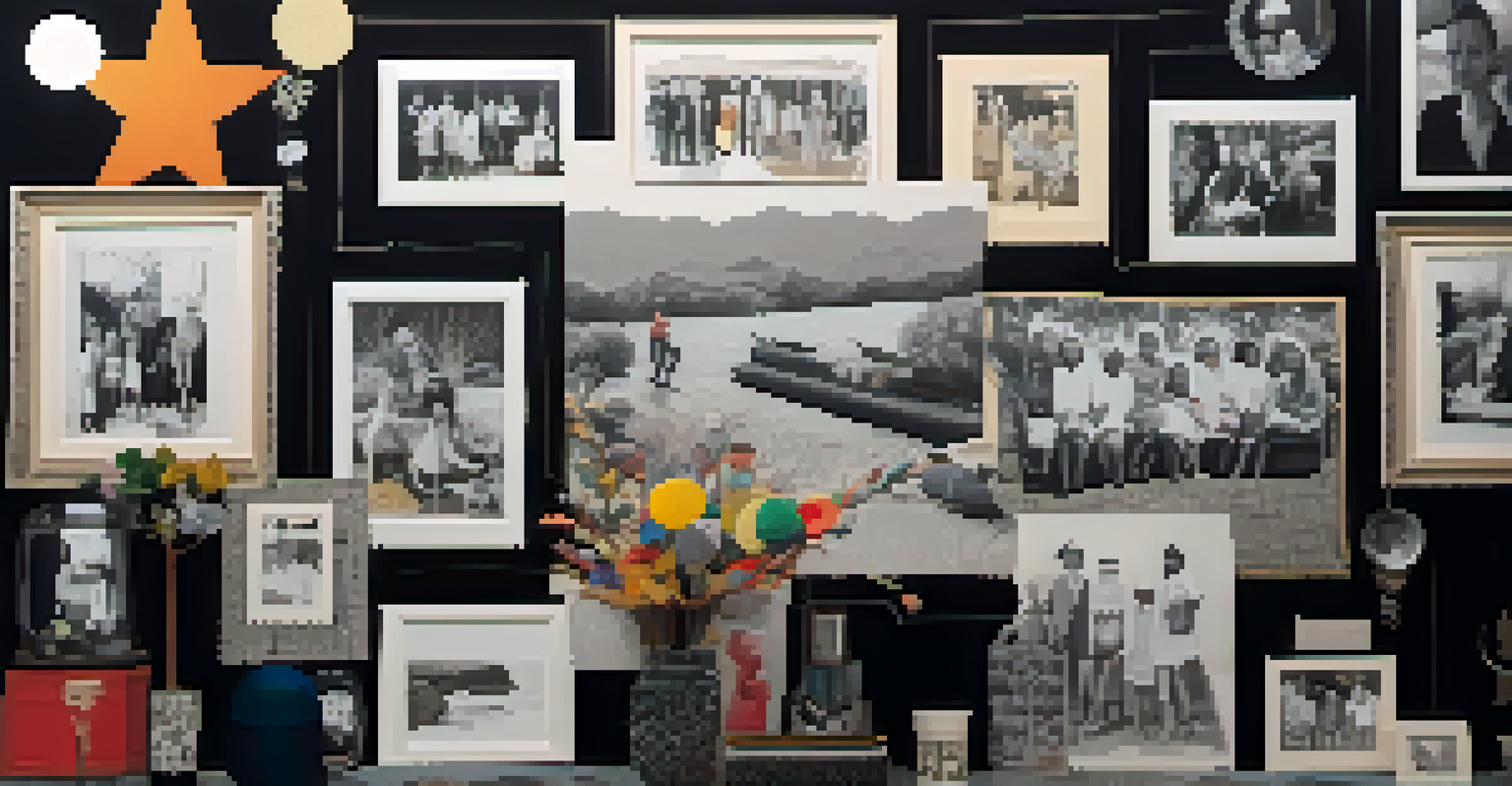The Influence of Memory on Artistic Style and Techniques Used

Understanding Memory's Role in Art Creation
Memory is a powerful tool that artists often draw upon when creating their work. It acts as a reservoir of experiences, emotions, and visual stimuli that shape their artistic expression. For many artists, tapping into their memories allows them to convey deeper meanings and evoke specific feelings in their audience.
Art is the most beautiful of all lies.
Consider how a painter might recall a childhood landscape and use those vivid details to inspire their canvas. This personal connection not only enriches the artwork but also creates a bridge between the artist's past and present. It's this intertwining of memory and creativity that gives rise to unique artistic styles.
Ultimately, memory serves as both a muse and a guide, influencing the decisions artists make as they develop their techniques and styles. The stories we hold in our minds can lead to entirely new forms of expression that resonate on a profound level.
The Impact of Personal Memories on Artistic Expression
Personal memories play a crucial role in shaping an artist's unique voice. Each artist's background, experiences, and emotions influence their work, resulting in a distinctive style that tells their story. For instance, an artist who grew up in a bustling city may incorporate urban themes and vibrant colors that reflect their memories of that environment.

When artists draw from their personal experiences, they create a connection with viewers who may resonate with similar feelings or memories. This shared experience can evoke nostalgia or provoke thought, allowing the audience to engage more deeply with the artwork. It's like sharing a piece of one's soul through colors, shapes, and forms.
Personal Narratives Drive Style
Each artist's unique experiences influence their artistic style, leading to distinctive expressions that tell their personal stories.
Moreover, these personal narratives often manifest in the techniques an artist employs. Whether through bold brush strokes or delicate details, the choices made in the creative process can reveal a lot about the memories that inspire them.
Collective Memory and Its Influence on Artistic Trends
Collective memory refers to the shared experiences and narratives of a community or culture. This concept significantly influences artistic movements and trends, as artists often reflect the societal memories of their time. For example, the Surrealist movement was heavily influenced by the collective memory of World War I and the resulting disillusionment.
Every artist dips his brush in his own soul, and paints his own nature into his pictures.
Artists tap into these collective memories to comment on social issues, challenge norms, and provoke thought. By channeling the memories of a broader society, they can create art that resonates with a larger audience and inspires change. In this way, art serves as a mirror, reflecting the shared consciousness of its time.
Additionally, collective memories can lead to the revival of certain styles or techniques, as artists seek to reconnect with or reinterpret past artistic expressions. This cyclical nature of memory in art creates a rich tapestry of influences that continue to evolve.
Techniques Artists Use to Evoke Memory
Artists employ various techniques to evoke memories, both personal and collective, in their work. One common approach is the use of symbolism, where objects or colors represent specific themes or emotions tied to memory. For instance, a fading photograph might symbolize nostalgia, while vibrant hues could evoke joy or celebration.
Another technique is the manipulation of light and shadow, which can create an atmosphere reminiscent of certain memories. Artists may use soft lighting to evoke warmth and comfort or stark contrasts to convey tension and conflict, much like how our memories are colored by our emotions.
Innovation Through Memory Reinterpretation
By revisiting and reinterpreting memories, artists can create innovative art that challenges norms and connects with contemporary themes.
Additionally, mixed media allows artists to incorporate tangible elements from their memories, such as photographs or found objects, directly into their work. This hands-on approach creates a multi-dimensional experience that invites viewers to engage with the art on a deeper level.
The Relationship Between Memory and Style Development
The development of an artist's style is often a reflection of their memories and experiences. As artists grow and evolve, their style may shift in response to new memories or a reevaluation of past ones. This dynamic relationship highlights how memory is not static but rather a fluid influence that shapes artistic expression over time.
For instance, an artist may start with a specific style rooted in their childhood memories but later branch out as they encounter new experiences. This evolution can lead to innovative techniques and a broader range of expression, demonstrating how memory can inspire growth and transformation.
Ultimately, the interplay between memory and style underscores the personalization of art. Each artist's journey is unique, and their evolving style is a testament to the memories that have shaped them along the way.
Memory as a Source of Inspiration for Innovation
Artists often find inspiration in their memories, leading to innovative approaches and styles that challenge conventional norms. By revisiting past experiences, they can reinterpret them through a contemporary lens, creating fresh perspectives on familiar themes. This process can lead to groundbreaking work that resonates with audiences on multiple levels.
For example, an artist might draw upon a childhood memory of a family gathering to create a piece that explores themes of connection and belonging. Through innovative techniques, such as digital manipulation or installation art, they can transform that memory into a compelling visual narrative that speaks to current societal issues.
Memory Shapes Artistic Expression
Artists draw upon personal and collective memories to create work that resonates emotionally with their audience.
This innovative spirit showcases how memory is not just a source of nostalgia but a catalyst for creativity and originality. It encourages artists to push boundaries and explore new territories in their work.
Conclusion: The Lasting Impact of Memory on Art
In conclusion, memory plays an integral role in shaping artistic style and techniques. From personal recollections to collective narratives, memories influence how artists express themselves and relate to their audiences. This connection to memory enriches the artistic landscape, making each piece a unique reflection of the artist's journey.
As we engage with art, we are often reminded of our own memories, creating a shared experience that transcends time and space. This powerful bond between memory and art not only deepens our understanding of the work but also fosters a sense of connection among viewers.

Ultimately, the influence of memory on artistic style and techniques highlights the profound relationship between our past experiences and creative expression. It reminds us that art is not just about what we see, but also about the memories that shape our perceptions and inspire our creations.